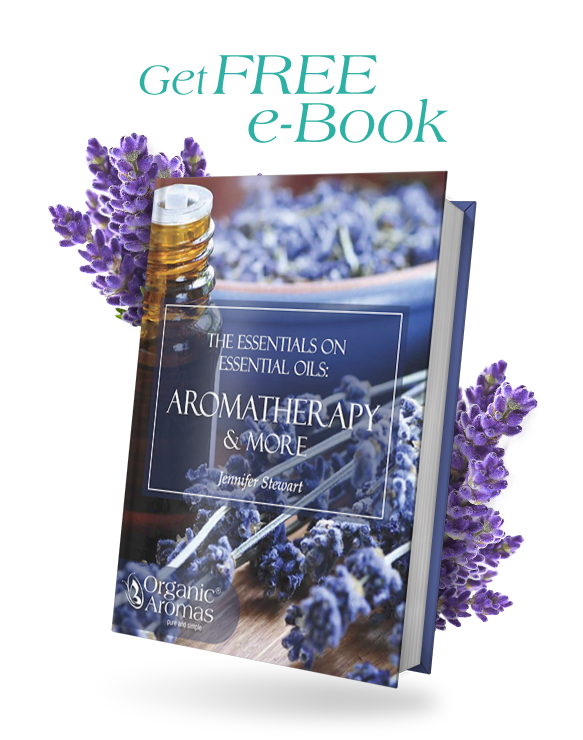Last Updated on March 30, 2024 by Aditya
Struggling with sciatica pain? Essential oils for sciatica might be the natural solution you’re looking for. In this article, you’ll find how these oils can serve as a complementary approach for managing nerve pain. From peppermint’s cooling effect to lavender’s soothing properties, learn which might be best for you and how to use them.
Unveiling Nature’s Secret Arsenal Against Sciatica Pain
- Several essential oils, including peppermint, lavender, eucalyptus, ginger, and rosemary, are identified for their analgesic and anti-inflammatory properties which can provide relief for sciatica pain.
- Creating a personalized blend of essential oils diluted with a carrier oil, such as coconut, jojoba, sweet almond, or arnica oil, can enhance the therapeutic effects for sciatica pain relief.
- Scientific journal studies have confirmed that specific organic compounds found in essential oils possess analgesic and anti-inflammatory properties, contributing to their effectiveness in managing sciatica pain.
- Essential oils can be applied through multiple methods such as massage therapy, aromatherapy diffusers, or bath soaks to aid in the healing process, but precautions must be taken to ensure safe usage, especially for those with allergies, pregnant women, or those on certain medications.
Exploring Top Essential Oils for Sciatica Relief

Various cultures have long utilized essential oils for their therapeutic benefits. They are potent extracts derived from various parts of plants, including the leaves, flowers, bark, and roots. When it comes to sciatica, certain essential oils have shown promise in providing relief from this agonizing condition. They support the natural healing process, reducing dependence on painkillers by enhancing circulation and offering analgesic and anti-inflammatory properties.
From the vast array of essential oils, five stand out for their efficacy in relieving sciatica pain:
- Peppermint
- Lavender
- Eucalyptus
- Ginger
- Rosemary
- Wintergreen
- Black Pepper
Not only do these oils alleviate pain, they also promote circulation, which is essential for nutrient transport and effective tissue repair.
Essential Oils for Sciatica: Benefits and Active Compounds
| Essential Oil | Potential Benefits for Sciatic Pain | Key Compound Responsible |
|---|---|---|
| Peppermint | Cooling and numbing effect, reduces inflammation | Menthol |
| Lavender | Soothes pain, reduces inflammation, alleviates stress | Linalool |
| Eucalyptus | Relieves muscle tension and pain, anti-inflammatory | 1,8-Cineole (Eucalyptol) |
| Ginger | Warming effect, stimulates circulation, anti-inflammatory | Gingerol |
| Rosemary | Reduces pain, anti-inflammatory, improves circulation | Carnosol and Rosmarinic Acid |
| Wintergreen | Analgesic similar to aspirin, reduces discomfort | Methyl Salicylate (caution toxic if ingested) |
| Black Pepper | Warming, improves circulation, anti-inflammatory | inflammatory Piperine |
Peppermint Oil: Cooling Comfort

Peppermint essential oil, known for its cooling and numbing effects, is a go-to remedy for many with sciatic nerve pain. It’s like liquid ice that numbs the pain and reduces inflammation associated with sciatica. This cooling sensation is due to the presence of menthol, a natural compound with potent anti-inflammatory and analgesic properties. Some benefits of using peppermint essential oil for sciatic nerve pain include:
- Cooling and numbing effect
- Reduction of inflammation
- Relief from pain
- Natural and safe remedy
Applying peppermint oil to the affected area can provide immediate relief by numbing the pain and diminishing inflammation. To prevent potential skin irritation, it’s always recommended to dilute peppermint essential oil with a carrier oil like almond oil before skin application.
Lavender Oil: Soothing Relaxation

Picture the calming and soothing scent of lavender. Now imagine that same tranquility easing your sciatica pain. Lavender essential oil is known for its relaxation and anxiety-reducing properties, which can help alleviate the stress associated with sciatica pain. It eases pain, tension, and muscle spasms, providing direct relief from discomfort caused by sciatica.
The versatility of lavender essential oil, with its anti-inflammatory and anti-spasmodic properties, makes it a valuable addition to your natural remedy collection. You can use it in a massage blend, add it to your bath, or even use it in an essential oil diffuser to reap its benefits.
Eucalyptus Oil: Pain Relief Powerhouse

Eucalyptus essential oil is another powerful natural remedy for sciatica pain. Known for its analgesic and anti-inflammatory properties, eucalyptus oil can relieve pain caused by muscle and joint inflammation, making it a potent weapon against sciatic nerve pain.
When applied topically, eucalyptus oil penetrates the skin deeply, soothing sore muscles and joints and providing instant relief for sciatica sufferers. However, like most essential oils, it should be diluted with a carrier oil before application to avoid any potential skin irritation.
Ginger Oil: Warming Relief

Ginger, renowned for its warming properties, is a game changer for sciatica pain. When distilled into an essential oil, ginger packs a powerful punch, commonly used in various natural treatments and home remedies for pain relief.
Ginger essential oil can provide significant relief for sciatica pain. Here’s how to use it:
- Dilute a few drops of ginger essential oil with a carrier oil.
- Gently massage the mixture into the affected area.
- The warming effect of the oil stimulates blood flow, nourishing damaged tissues and speeding up the healing process.
- The oil’s anti-inflammatory properties help reduce inflammation, a key culprit in sciatica pain.
Try this natural remedy to find relief from sciatica pain, muscle pain, and support sciatic nerve regeneration.
Rosemary Oil: Natural Anti-Inflammatory
Rosemary essential oil, with its potent anti-inflammatory and analgesic properties, is another natural remedy for sciatica pain relief. By reducing inflammation and alleviating pain, rosemary oil offers a two-pronged approach for soothing irritated sciatic nerves.
Integrating rosemary essential oil into your sciatica treatment regimen can provide a natural, effective option for relief. Whether applied directly or mixed with other oils in a blend, rosemary oil can help manage the pain and discomfort associated with sciatica.

Creating Your Own Sciatica Relief Blend
Formulating your own blend of essential oils enables a tailored approach to relieving sciatica pain. It’s like having your own tailored natural remedy at your fingertips. By understanding the properties of different essential oils and how they interact, you can create an effective blend that targets your specific pain points.
The formulation begins with selecting a base carrier oil. Carrier oils not only dilute the pure essential oils for safe skin application but also prolong their therapeutic effects. The blend’s potency can be adjusted by adding more or less of certain oils, depending on your needs and preferences. Some common carrier oils include:
- Coconut oil
- Jojoba oil
- Sweet almond oil
- Olive oil
- Avocado oil
- Arnica oil
DIY Sciatica Relief Essential Oil Blend
Detailed DIY recipe for an essential oil blend specifically designed to relieve sciatica pain, along with an explanation of its effectiveness
20 minutes
Prepare the Blend
Using the dropper, carefully measure and add 10 drops of Lavender Essential Oil, 8 drops of Peppermint Essential Oil, 5 drops of Eucalyptus Essential Oil, and 5 drops of Ginger Essential Oil into the small, dark glass bottle.
Add the Carrier Oil
Pour 2 tablespoons of Arnica Carrier Oil into the bottle. If needed, use a small funnel to avoid spills.
Mix the Oils
Securely close the bottle with its cap. Shake well to ensure all the oils are thoroughly mixed together, forming your sciatica relief blend.
Application Method
Gently apply a small amount of the oil blend to the lower back and along the path of the sciatic nerve. Massage softly without exerting direct pressure on the spine.
Safety Check
Conduct a patch test on a small skin area before full application. If sensitivity occurs, dilute the blend further with more carrier oil.
Estimated Cost: 5 USD
Supply:
- Small, dark glass bottle
- Measuring spoons
Tools:
- Dropper (for essential oils)
- Bottle cap or small funnel (optional, for easier mixing)
Materials: Lavender Essential Oil (10 drops): Soothes pain and reduces inflammation.
Peppermint Essential Oil (8 drops): Cools and numbs sciatic pain.
Eucalyptus Essential Oil (5 drops): Relieves muscle tension and pain.
Ginger Essential Oil (5 drops): Stimulates circulation for faster healing.
Arnica Carrier Oil (2 tablespoons/Approx. 60ml): Anti-inflammatory and pain-relieving base oil.
Effectiveness:
- The menthol in Peppermint Oil and warming agents in Ginger Oil work together to distract from deep sciatic pain through a soothing sensation.
- Anti-inflammatory properties in Lavender and Eucalyptus Oils help reduce nerve irritation.
- The Arnica Carrier Oil enhances absorption and adds to the blend’s pain-relieving capabilities.
Usage Tips:
- Apply the blend 2-3 times daily, focusing on times of rest or before sleep to aid nighttime discomfort.
- Store the oil blend in a cool, dark place to maintain its effectiveness over time.

Sign Up to Get Your FREE
e-Book Here…
Please enable JavaScript in your browser to submit the form
Choosing Carrier Oils
The selection of the appropriate carrier oil for your blend is of utmost importance. Carrier oils not only dilute the essential oils for safe skin application but also provide their own unique benefits. Some popular carrier oils include arnica oil, fractionated coconut oil, and sweet almond oil.
Arnica oil, for instance, is well-suited for joint and muscle pain relief, including sciatica pain, due to its analgesic and anti-inflammatory properties. It also enhances circulation in damaged joints, muscles, and tendons.
What is Arnica?
Arnica montana is a perennial herb found in the mountains of Europe and Siberia, renowned in traditional medicine for its anti-inflammatory and pain-relieving properties. It’s often used topically to treat bruises, sprains, and muscle aches. The key component contributing to its potential effectiveness against conditions like sciatica is Helenalin, a sesquiterpene lactone known for inhibiting the transcription factor NF-κB. This action helps reduce the expression of pro-inflammatory cytokines, offering a natural approach to managing inflammation and pain.
Fractionated coconut oil, on the other hand, is excellent for people with dry skin due to its moisturizing properties. Sweet almond oil, rich in vitamin E, serves as a good massage oil for sciatica relief due to its non-greasy texture.
Blending Techniques
After selecting your carrier oil, the next stage involves incorporating the essential oils. The technique of blending plays a vital role in creating a balanced and potent blend. Some oils, such as black pepper and wintergreen, can be mixed with carrier oils or used in hot compresses for sciatic nerve pain relief.
For instance, a blend of peppermint, lavender, and black pepper oils can be massaged directly onto the lower back to alleviate sciatica pain. Other oils, like lavender, can be used in bath soaks to calm nerve activity and provide anti-inflammatory and anti-spasmodic benefits.

Join Now and Get a Coupon for %10 Off!
Please enable JavaScript in your browser to submit the form
How to Apply Essential Oils for Sciatica
With your blend ready, the next question is how to use it? There are several ways to apply essential oils for sciatica relief, each with its own unique benefits. These methods include:
- Massage therapy: Apply the blend directly to the affected area and massage gently.
- Aromatherapy diffuser: Add a few drops of the blend to a diffuser and inhale the aroma.
- Bath soaks: Add a few drops of the blend to a warm bath and soak for 15-20 minutes.
Each method allows the active compounds in the oils to penetrate the skin and deliver nutrients directly to the injured area, aiding in the healing process.
Keep in mind that using therapeutic essential oils in combination with massage can boost circulation and lessen the dependency on pain medications by promoting the body’s natural healing mechanisms.
Massage Therapy
Massage therapy, when combined with essential oils, can provide significant relief from sciatica pain. Massaging the oil blend into the lower back targets muscle relaxation, enhances blood flow, and relieves nerve pressure, all of which contribute to pain relief.
A blend of essential oils such as peppermint, lavender, and black pepper is known for providing significant relief from back pain when used in massages. Massaging this blend directly onto the lower back can help to alleviate pain and enhance mobility, offering a natural treatment option for those experiencing sciatica.
Aromatherapy Diffusers
Aromatherapy diffusers are devices that disperse essential oils into the air, allowing for easy inhalation and providing therapeutic benefits. This method of application is particularly beneficial for oils like lavender, known for their calming and relaxing properties.
Brands like Organic Aromas offer an array of diffusers, including those designed specifically for aromatherapy, such as nebulizing diffusers®. Using an aromatherapy diffuser not only aids in relaxation but also improves the ambiance of your space through the inhalation of therapeutic scents.
Bath Soaks
Another effective way to use essential oils for sciatica relief is through bath soaks. Adding essential oils to your bath can help relax your muscles, alleviate pain, and enhance your overall wellbeing. The warm water aids in the absorption of the oils, providing a soothing and therapeutic experience.
You can experiment with different oils to find the combination that works best for you. For instance, wintergreen essential oil, known for its pain-relieving effects, can be combined with lavender for a calming bath soak. Pepper black essential oil, with its warming properties, can be considered as a warming essential oil that can enhance circulation when added to a bath soak, aiding in tissue repair and pain management.

Sign Up to Get Your FREE Essential Oils e-Book Here
Please enable JavaScript in your browser to submit the form
Precautions and Safety Tips
Despite the numerous benefits of essential oils, their safe usage is of paramount importance. Before initiating the use of essential oils for easing sciatica, it’s important to consider a few precautions. This includes being aware of potential allergic reactions, considerations for those who are pregnant or nursing, and potential interactions with certain medications.
Always start with a patch test to ensure skin compatibility, and dilute the essential oils with a carrier oil to prevent any potential skin irritation. Also, remember that essential oil blends are not suitable for all individuals. For example, they are not recommended for children under the age of 12 and individuals with certain allergies or medical conditions.
Allergic Reactions
It’s vital to perform a test for potential allergic reactions before using any new product. Essential oils, while natural, can still cause allergic contact dermatitis in some individuals. This is characterized by itchiness, redness, and scaling that typically occurs 24–72 hours after skin exposure.
To conduct a patch test, follow these steps:
- Apply a small amount of the diluted essential oil to a small area of your skin.
- Monitor the area for any adverse reactions for at least 24 hours.
- If you notice any signs of an allergic reaction, such as redness, itching, or swelling, discontinue use immediately and consult a healthcare professional.
Always remember to dilute essential oils with a carrier oil to minimize risk of skin irritation.
Pregnancy and Nursing
For pregnant or breastfeeding individuals, consulting a healthcare professional prior to using essential oils is essential. While they offer many potential benefits, there is limited research on their safety during pregnancy or breastfeeding.
Certain essential oils, such as pepper black, wintergreen, and peppermint, are considered unsafe during pregnancy and should be avoided. Also, due to increased sensitivity to smells during pregnancy, it’s advised to start with a small amount of essential oil and gradually increase based on tolerance.
Drug Interactions
Although essential oils can ease sciatica pain, being cognizant of potential interactions is crucial if you are on specific medications. For instance, wintergreen essential oil, due to its high content of natural methyl salicylate, should be used cautiously if you’re also taking aspirin or other salicylate drugs, as it may increase the effects and potential side effects.
Similarly, grapefruit essential oil can affect the metabolism of certain medications by inhibiting the cytochrome P450 enzymes, particularly CYP3A4, leading to increased medication levels and potential adverse effects. This interaction is particularly important for those on statins, certain blood pressure medications, and some antihistamines.
Always consult with your healthcare professional if you’re taking any medications before using essential oils. They can help you understand any potential risks and guide you on how to use essential oils safely and effectively.

Join Our Exclusive Member Club to get Big Discounts!
Please enable JavaScript in your browser to submit the form
Summary
Essential oils offer a natural and holistic approach to managing sciatica pain. With their analgesic, anti-inflammatory, and circulation-enhancing properties, essential oils like peppermint, lavender, eucalyptus, ginger, and rosemary can provide relief and support the body’s natural healing process. Whether applied through massage, diffused into the air, or added to a relaxing bath soak, these oils can offer a soothing and therapeutic experience.
Of course, like any treatment, it’s important to use essential oils safely. Always do a patch test for allergic reactions, dilute the oils with a carrier oil, and consult a healthcare professional if you’re pregnant, breastfeeding, or taking certain medications. With the right knowledge and precautions, you can harness the power of essential oils to manage your sciatica pain and enhance your overall wellbeing.
Frequently Asked Questions
What fixes sciatica quickly?
A combination of hot and cold packs, over-the-counter medication, stretching, and staying active can quickly relieve mild sciatica. For more severe pain, consult a doctor for physical therapy, steroid injections, or surgery.
What essential oil is good for nerve pain?
Ginger oil is beneficial for nerve pain, largely due to its gingerols and shogaols content (not zingibain), which have potent anti-inflammatory properties.
Does frankincense oil help sciatica?
Frankincense oil, known for its anti-inflammatory properties, can help soothe sciatica pain by reducing inflammation. Though direct evidence on nerve regeneration is limited, its pain-relief benefits support its use in holistic sciatica treatment plans.
How should I apply essential oils for sciatica relief?
To relieve sciatica, you can apply essential oils through massage, using an aromatherapy diffuser, or adding them to a bath soak. Try these methods to find the one that works best for you.

